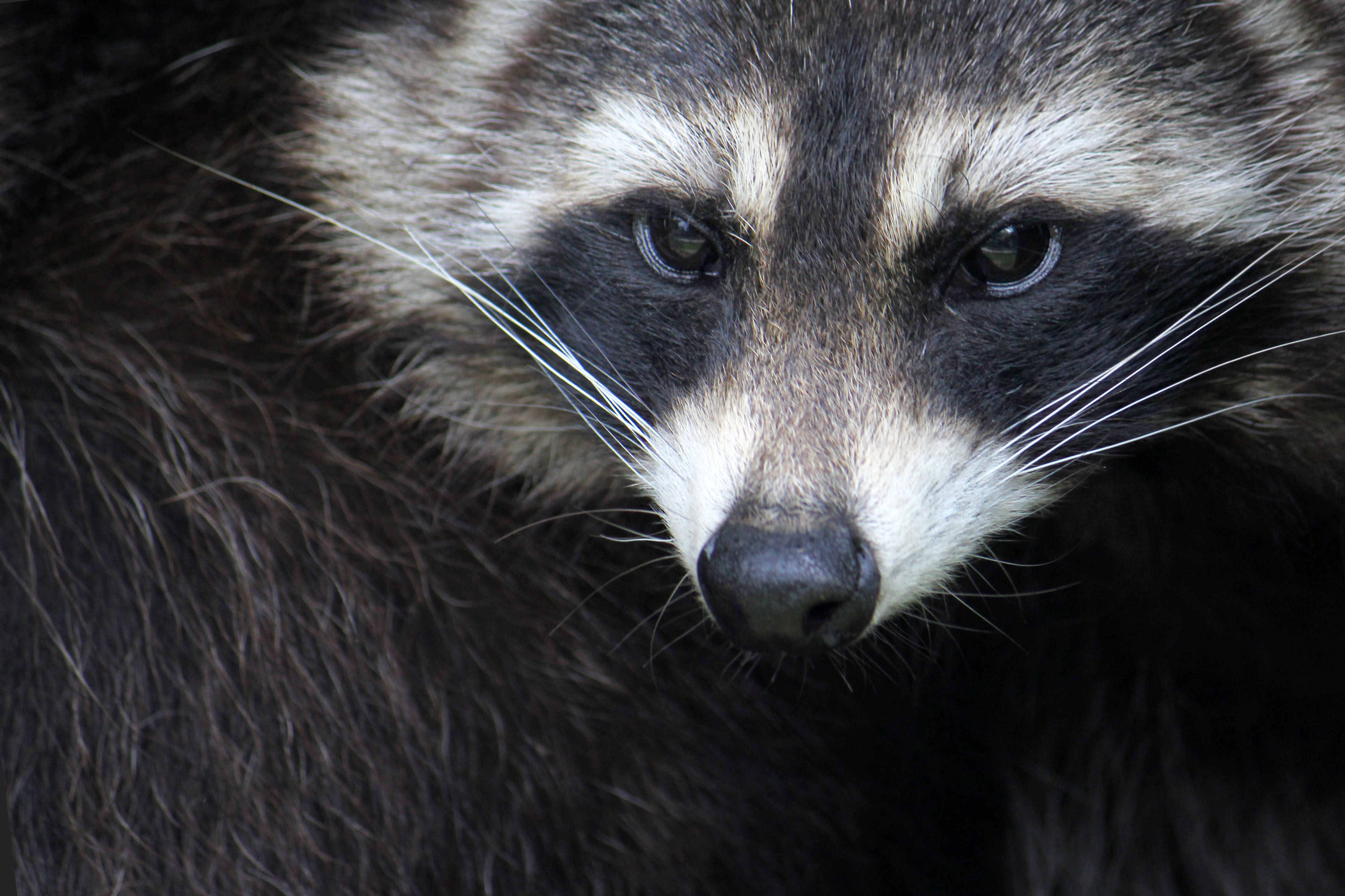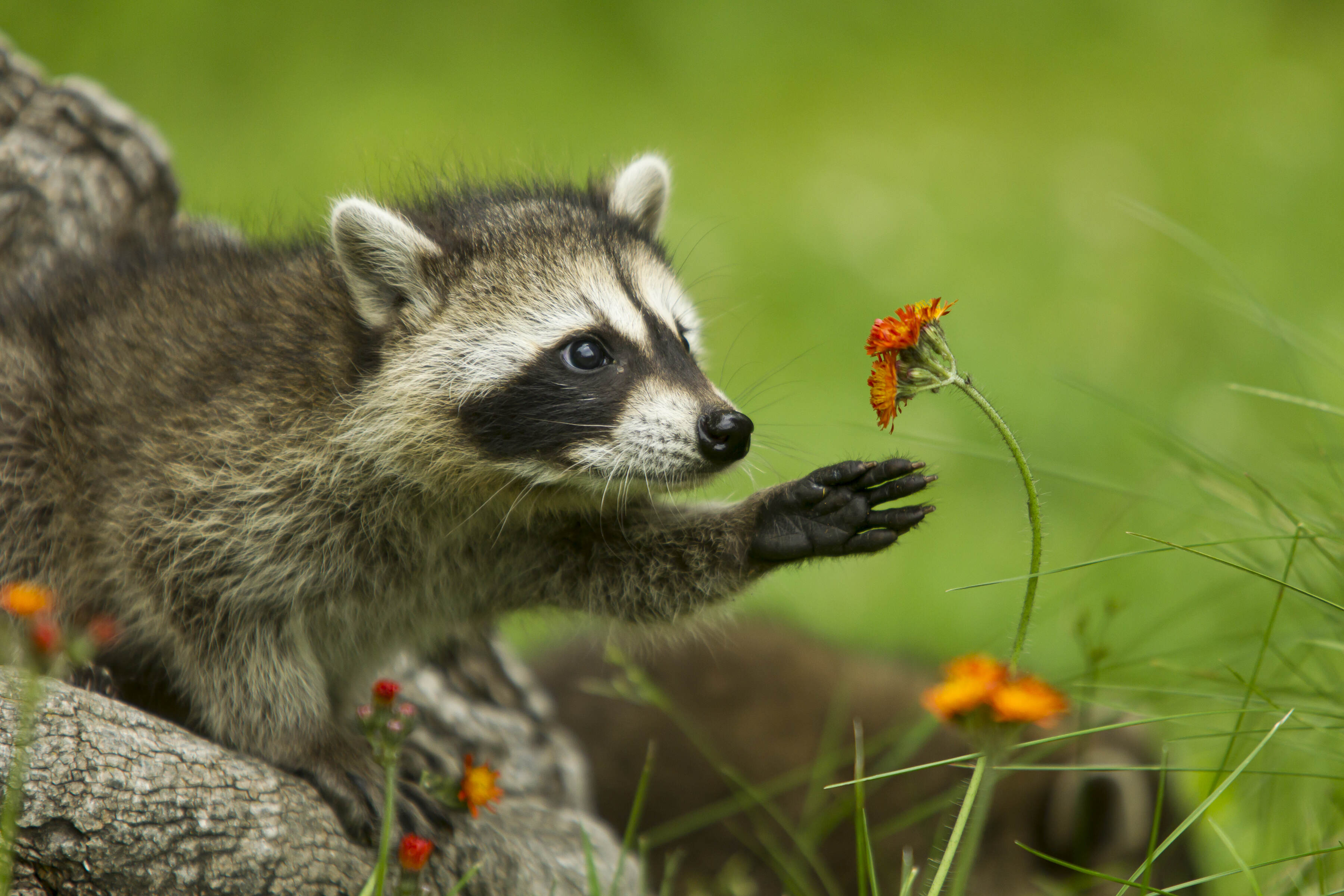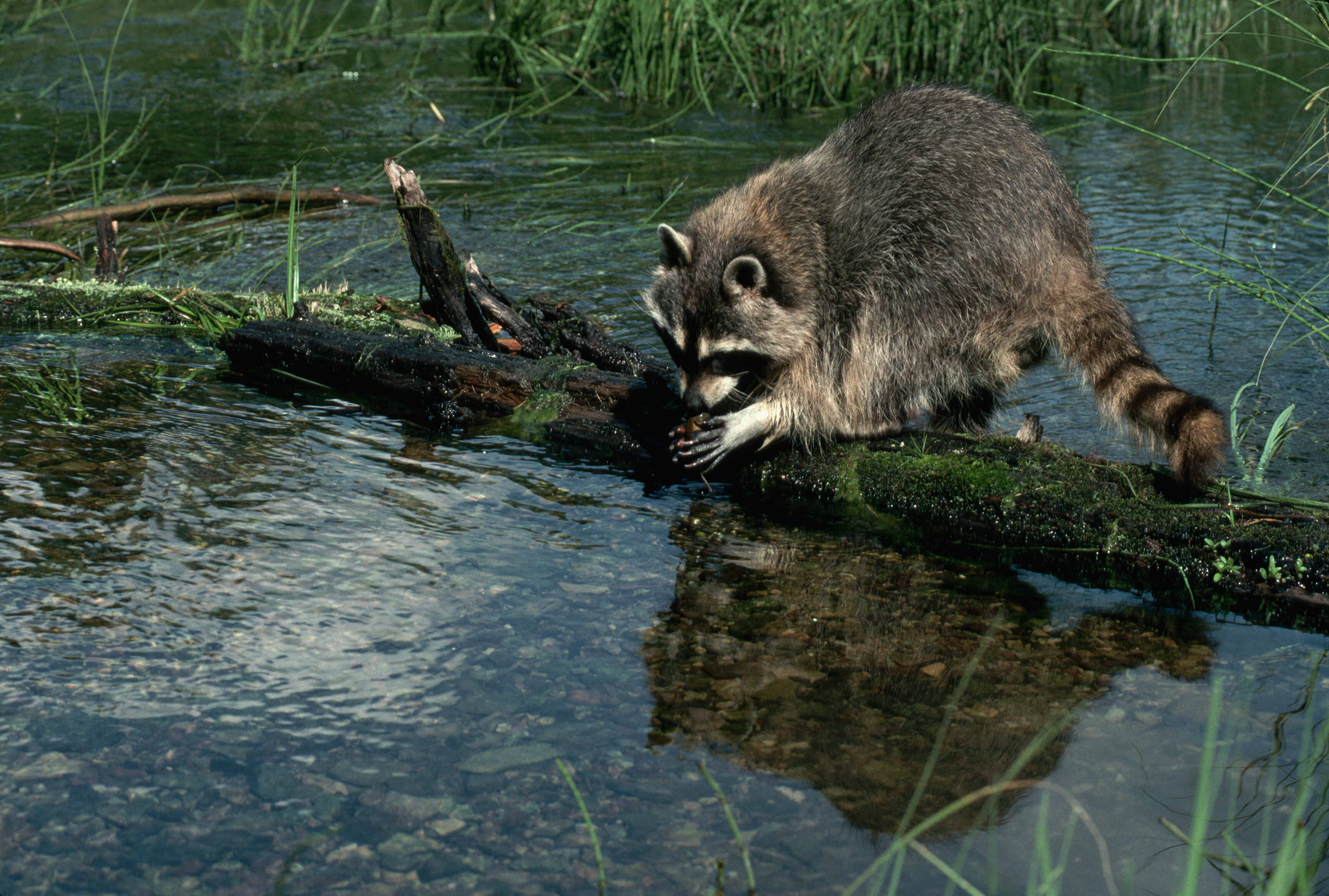
Whether they’re rifling through your trash or gracefully navigating city streets, raccoons are much more than “trash pandas.”
Raccoons are everywhere—in your neighborhood, on social media, and even in pop culture. With their iconic masked faces and curious demeanor, these adorable animals are often misunderstood and seen as pests.
However, we can coexist with these resourceful animals, and these eight raccoon facts might make you see them a little differently.
1. Raccoons Are Highly Intelligent
Studies show raccoons can remember solutions to tasks for up to three years, and these incredible animals have the cognitive abilities of a young child! Raccoons use their sharp minds to solve puzzles, open latches, and adapt to changing environments. So, the next time you see a raccoon outsmarting your trash can, remember—it’s not personal. It’s science.
2. Raccoons Are Nature’s Little Engineers
Raccoons have dexterous front paws with hypersensitive touch receptors, making them incredibly skilled at manipulating objects. They’re capable of turning doorknobs, untying knots, and even fishing for food in water. This adaptability has allowed them to thrive in urban and suburban areas where food and shelter are plentiful.
3. Their Famous “Washing” Habit Has a Purpose
Ever seen a raccoon dunk their food in water? This behavior, often mistaken as “washing,” actually enhances their tactile sense, helping them gather more information about what they’re eating.
In fact, their Latin name is Procyon lotor, meaning before-dog washer (dog is a reference to when raccoons were originally thought to be members of the canine family). Their common name, raccoon, was derived from the Algonquin people, meaning “he who scratches with his hands.”
While it may seem quirky, “washing their paws” is just another example of their remarkable adaptation skills.
4. Raccoons Are Family-Oriented
While raccoons are mostly solitary animals, female raccoons are dedicated mothers. They raise their kits (babies) alone, teaching them essential survival skills like climbing and foraging. Kits stay with their mothers for about a year before venturing out on their own, proving that family ties are strong in the raccoon world.
You may also see a group of female raccoons spending time together, but they will split away when breeding season comes around. Male raccoons will stay with females for approximately a month before breeding and leave after his kits are born.
Raccoons only breed once per year, but will give birth to three or four babies on average. Mother raccoons are fiercely maternal and will fight male raccoons who wander into the area where her den is located.
5. Raccoons Are Primarily Crepuscular
While raccoons are primarily crepuscular animals, meaning they’re active at dawn and dusk, and nocturnal, meaning active at night, they occasionally venture out in the daytime.
Don’t be alarmed if you see a raccoon out during the day! In some urban environments, like New York City, raccoons have fewer predators, so it’s not unusual for these opportunistic mammals to be outside during the day.
Additionally, mother raccoons are often seen scavenging for food during the day and are not rabid, just hungry. If you see a raccoon out during the daytime, take a photo and video and contact your local wildlife rehabber for advice and assessment.
6. Raccoons Are Excellent Swimmers
While raccoons are opportunistic feeders, enjoying their favorite foods like fruits, seeds, nuts, birds’ eggs, and plants, they’re also excellent swimmers and hunt fish, frogs, and crayfish. They can swim up to 3 miles per hour!

7. Their Eye Masks Help Deflect Sunlight
While their eye masks are probably the most adorable thing we’ve ever seen, they’re not just there to look pretty! The dark distinctive markings help deflect the sun’s glare and are thought to enhance their night vision.
You might see professional athletes copy their markings by wearing eye black, which reduces glare from the sun or stadium lights.
8. Urban Raccoons Are Wildlife Warriors
Raccoons have become pros at navigating human-dominated environments. Whether they’re climbing skyscrapers, crossing busy roads, or making homes in abandoned buildings, they’ve mastered the art of urban survival. But as cities expand, raccoons face increasing challenges, from traffic accidents to habitat loss.
How to Coexist Peacefully with Raccoons
As humans continue to encroach on wildlife habitats, it’s important to remember that raccoons, like all animals, play a vital role in our ecosystem. Here’s how you can help:
Secure Your Trash
Use raccoon-proof bins and avoid leaving food scraps outside. You can also keep trash cans inside your garage if access points are fully closed.
Avoid Feeding Them
While it’s tempting to hand out treats, feeding wildlife can lead to dependence and alter natural behaviors. If you feed community cats, it’s important to have a routine so any leftover food is picked up after the cats have their fill, discouraging raccoons from hanging around.
Protect Your Home
Seal off entry points like chimneys, crawlspaces, and attics to prevent unintentional “roommates.”
Drive Cautiously
Keep an eye out for raccoons crossing roads, especially at night. During times when raccoons are raising kits, be extremely diligent that there might be more than one crossing a road and act accordingly.
Don’t Wear Fur
Raccoons are often trapped for their fur. Wearing real fur can promote the continuing capture and killing of raccoons.

A Future Where Raccoons Thrive
Raccoons are a testament to the resilience of our wild world. By understanding their behaviors and needs, we can foster a future where humans and animals coexist harmoniously. So, the next time you spot a raccoon peeking from the shadows, remember—they’re not just scavengers; they’re survivors.
Supporting organizations like World Animal Protection is one of the best ways to help animals like raccoons and protect their habitats. Check out our guide for more resources on how to help wild animals who might be in distress.
With your help, we can create a safer, kinder world for all living beings.
